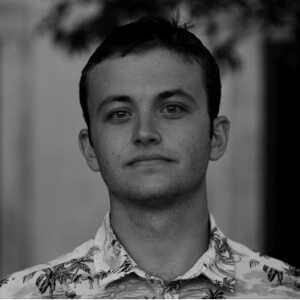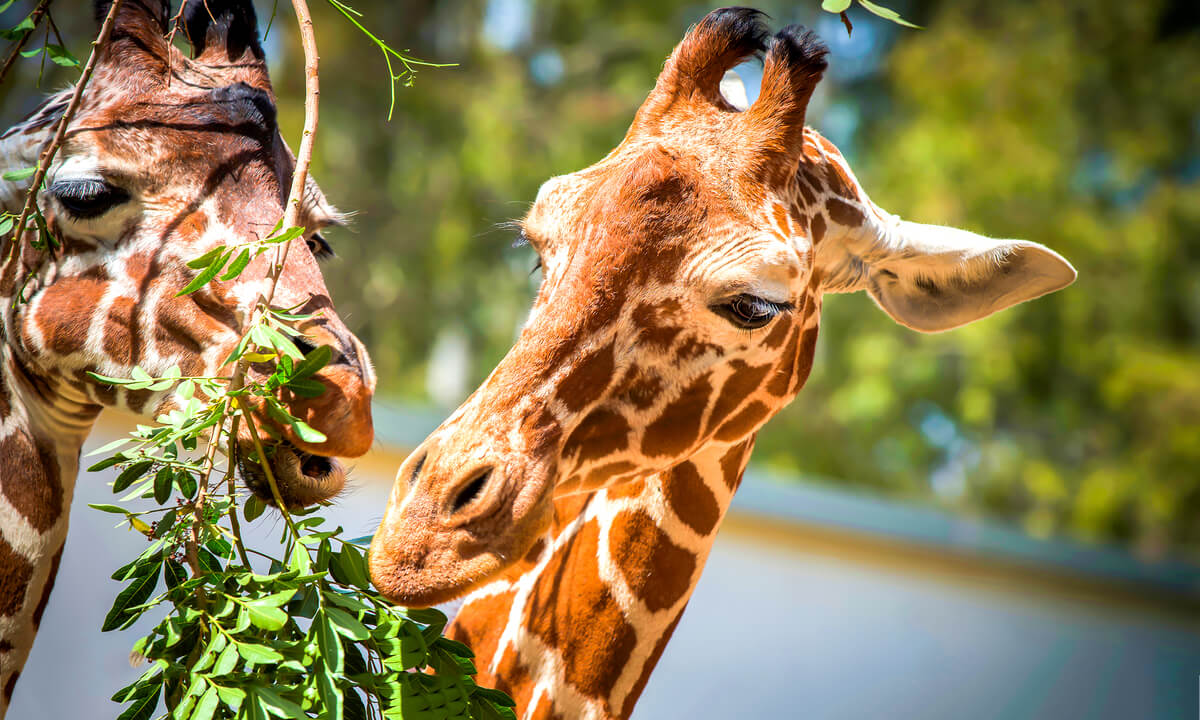What Is the Optimal Foraging Theory?


Written and verified by the biologist Miguel Mata Gallego
The optimal foraging theory is a model that predicts the best way for animals to feed so as not to expend too much energy and time in the process. Defined from another perspective, it’s a natural mechanism based on the maximization of resources in a limited space or time.
What is this model based on? What factors does it depend on? Is it the same for all animals? We’ll answer all these questions and many others in the following lines.
The model that predicts animal foraging
The model that predicts an animal’s foraging behavior is known as optimal foraging theory (OFT). Evolutionarily, living things develop adaptations that allow them to survive. These mechanisms aren’t only based on anatomical models – wings, hands, or claws – but also on behavioral patterns.
As we all know, obtaining food provides the energy necessary for the activities that animals carry out: moving, reproducing, and living with all that this entails. However, searching for and obtaining food is one of the most energy-consuming activities.
Therefore, it’s logical to think that the animal will be interested in obtaining enough food to carry out its activities, but without spending too much time and energy at the same time. This is because it also has to reproduce and escape from possible predators.
The optimal foraging theory is the model that predicts this optimal diet. In other words, it calculates the balance that animals must find between the cost and benefit of foraging.

The struggle between energy and time
In general, researchers divide the time interval used by living beings during their dietary maintenance into foraging time and handling time. Handling time includes activities such as hunting for prey or the time it takes for the animal to ingest organic matter.
Therefore, we can imagine the model as a “struggle” between foraging and handling times and the energy obtained from food. The relationship between energy and time must be as balanced as possible for this food to be consumed.
Therefore, it makes sense that a jaguar would not feed on flies. It would spend more energy hunting them than it would gain in digestion.
Factors affecting the optimal foraging model
The optimal foraging model is made up of several complex equations. While we don’t intend to dive into the complexity of the mathematics, we will list below a number of factors that condition it.
The dispersion of feeding
For many animals, feeding that involves moving from one place to another isn’t the same as feeding that involves staying in one place for a long time. Thus, travel time is a fundamental factor for living beings when choosing their diet.
As an example, we can think of the diet of a granivorous bird, such as the goldfinch. For this bird, there’s a big difference between a large forest with trees close together and a huge meadow with scattered vegetation. In the latter, the energetic cost of feeding is much higher.
In fact, there’s a theory called the “marginal value theorem”, which proposes the following postulation: the optimal travel time from one place to another is proportional to the animal’s adequate diet.
The quality of the food
Many animals may reject certain feeding sites if the quality of the food is poor. This is usually because, if the food is of poor quality, it doesn’t meet their energetic demands and isn’t worth feeding on.
For example, we can think of a large predator such as the cheetah. There’s a big difference between large prey – such as wildebeest – and the nutritional value of a diet based on small mammals or carrion.
Although wildebeest are more difficult to hunt, the quantity and quality of the food more than compensates for the effort. Thus, the optimal foraging theory can also be used to predict prey selection in predator groups.
Is this theory the same for all animals?
The optimal foraging theory is a good predictor of how animals feed. We can go further, because this model can decipher whether a species will have a generalist or specialist way of life. Let us explain.
In a specialist species – such as the Iberian lynx – the search time for prey is relatively short. Therefore, it pays to hunt the same prey all the time, in this case, rabbits. In doing so, it will specialize in a single type of victim and will feed more efficiently each time.
Generalist groups, on the other hand, feed on a wide variety of different foods. This is the case for the common mouse, for example. For this type of species, the cost of searching for a single food source is higher than that of feeding on a variety of resources. Thus, the mouse bases its diet on various seeds, grains, and plants.

In conclusion, we can conclude that the theory of optimal foraging allows zoologists and ecologists to easily predict the feeding behavior of an animal in its natural environment, its choice of prey, and even whether it is a generalist or a specialist.
The optimal foraging theory is a model that predicts the best way for animals to feed so as not to expend too much energy and time in the process. Defined from another perspective, it’s a natural mechanism based on the maximization of resources in a limited space or time.
What is this model based on? What factors does it depend on? Is it the same for all animals? We’ll answer all these questions and many others in the following lines.
The model that predicts animal foraging
The model that predicts an animal’s foraging behavior is known as optimal foraging theory (OFT). Evolutionarily, living things develop adaptations that allow them to survive. These mechanisms aren’t only based on anatomical models – wings, hands, or claws – but also on behavioral patterns.
As we all know, obtaining food provides the energy necessary for the activities that animals carry out: moving, reproducing, and living with all that this entails. However, searching for and obtaining food is one of the most energy-consuming activities.
Therefore, it’s logical to think that the animal will be interested in obtaining enough food to carry out its activities, but without spending too much time and energy at the same time. This is because it also has to reproduce and escape from possible predators.
The optimal foraging theory is the model that predicts this optimal diet. In other words, it calculates the balance that animals must find between the cost and benefit of foraging.

The struggle between energy and time
In general, researchers divide the time interval used by living beings during their dietary maintenance into foraging time and handling time. Handling time includes activities such as hunting for prey or the time it takes for the animal to ingest organic matter.
Therefore, we can imagine the model as a “struggle” between foraging and handling times and the energy obtained from food. The relationship between energy and time must be as balanced as possible for this food to be consumed.
Therefore, it makes sense that a jaguar would not feed on flies. It would spend more energy hunting them than it would gain in digestion.
Factors affecting the optimal foraging model
The optimal foraging model is made up of several complex equations. While we don’t intend to dive into the complexity of the mathematics, we will list below a number of factors that condition it.
The dispersion of feeding
For many animals, feeding that involves moving from one place to another isn’t the same as feeding that involves staying in one place for a long time. Thus, travel time is a fundamental factor for living beings when choosing their diet.
As an example, we can think of the diet of a granivorous bird, such as the goldfinch. For this bird, there’s a big difference between a large forest with trees close together and a huge meadow with scattered vegetation. In the latter, the energetic cost of feeding is much higher.
In fact, there’s a theory called the “marginal value theorem”, which proposes the following postulation: the optimal travel time from one place to another is proportional to the animal’s adequate diet.
The quality of the food
Many animals may reject certain feeding sites if the quality of the food is poor. This is usually because, if the food is of poor quality, it doesn’t meet their energetic demands and isn’t worth feeding on.
For example, we can think of a large predator such as the cheetah. There’s a big difference between large prey – such as wildebeest – and the nutritional value of a diet based on small mammals or carrion.
Although wildebeest are more difficult to hunt, the quantity and quality of the food more than compensates for the effort. Thus, the optimal foraging theory can also be used to predict prey selection in predator groups.
Is this theory the same for all animals?
The optimal foraging theory is a good predictor of how animals feed. We can go further, because this model can decipher whether a species will have a generalist or specialist way of life. Let us explain.
In a specialist species – such as the Iberian lynx – the search time for prey is relatively short. Therefore, it pays to hunt the same prey all the time, in this case, rabbits. In doing so, it will specialize in a single type of victim and will feed more efficiently each time.
Generalist groups, on the other hand, feed on a wide variety of different foods. This is the case for the common mouse, for example. For this type of species, the cost of searching for a single food source is higher than that of feeding on a variety of resources. Thus, the mouse bases its diet on various seeds, grains, and plants.

In conclusion, we can conclude that the theory of optimal foraging allows zoologists and ecologists to easily predict the feeding behavior of an animal in its natural environment, its choice of prey, and even whether it is a generalist or a specialist.
All cited sources were thoroughly reviewed by our team to ensure their quality, reliability, currency, and validity. The bibliography of this article was considered reliable and of academic or scientific accuracy.
- Gutiérrez, Germán. (1998). Estrategias de Forrajeo. En Manual de Análisis Experimental del Comportamiento.
- Colaboradores de Wikipedia. Teoría del forrajeo óptimo [en línea]. Wikipedia, La enciclopedia libre, 2020 [fecha de consulta: 14 de octubre del 2020]. Disponible en <https://es.wikipedia.org/w/index.php?title=Teor%C3%ADa_del_forrajeo_%C3%B3ptimo&oldid=130036605>.
- VALDOVINOS, FERNANDA S; URBANI, PASQUINELL y RAMOS-JILIBERTO, RODRIGO. Análisis de las consecuencias del comportamiento adaptativo individual sobre la estabilidad poblacional: El caso del forrajeo óptimo. Rev. chil. hist. nat. [online]. 2010, vol.83, n.2 [citado 2020-10-14], pp.207-218.
- Leguizamón, M. R., Alfaro, L., & Orduña, V. Anticipación del costo de traslado en una simulación de forrajeo. Conductual, 2015, 3, 3, 182-196.
This text is provided for informational purposes only and does not replace consultation with a professional. If in doubt, consult your specialist.








